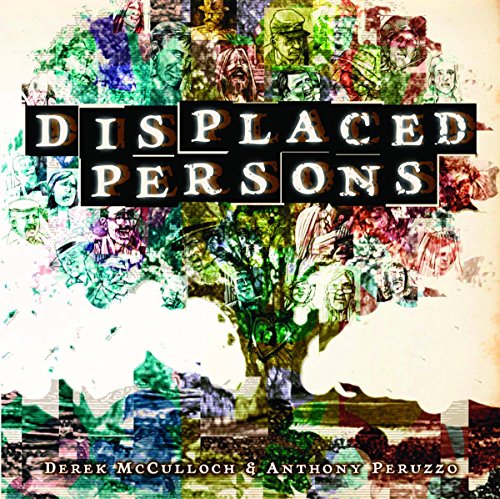Displaced Persons

Derek McCulloch, writer of Stagger Lee, returns with a mind-bending generational noir involving time travel and how terrible families can be to each other, illustrated by Anthony Peruzzo.
The three main sections of Displaced Persons look at various generations inhabiting a San Francisco house across from a park. In 1939, a private eye struggling to keep his family together under economic pressure is asked to find a mogul’s missing daughter. She’s run away, perhaps for very good reason, as a then-dirty secret is revealed. This is the most traditionally noir of the chapters, with the PI, the abusive rich guy, and the secret motivations.
In 1969, the tale is that of the undercover cop and the druggie. Twin brothers took different paths, with one a hippie (with a wife and kid) trying to score in a drug deal, the other a police detective. The older, grandparent generation tries to protect the youngest, in a recognition of how society at that time supported folks never growing up, to everyone’s detriment — particularly the little girl’s.
That daughter, in 1999, is now grown up, with a son and a controlling husband. He’s pressuring her to take advantage of her family to get funds for a stock deal, but although she owes him, she no longer trusts him. This section is the type of story where events spiral out of control, lethally, not from choice, but from fate.
The art is monochrome-toned, with slightly different shades for different eras, an immensely visual technique that’s particularly eye-catching when it comes to the people out of their own time (since they appear in different tones, reflecting their different cultural perspectives). The smoky blue-grey of the dirty city and its underclass gives way to the reddish sepia of the long-ago 60s. The more modern 90s is greenish, suggesting money and new growth, a hope that’s thwarted. They’re all reflected on the cover.
The characters are sharp-edged, spiky and slightly off-putting. Or maybe that’s me reading into how I wouldn’t want to know these people, although their stories are entertaining in a “thank goodness that’s not me” style. I found the visual distance they create reflective of how many of them are, whether willingly or not, pushing those close to them away. In other words, the art reflects the theme of the stories well.
The most fascinating thing about Displaced Persons, to me, is that you have to read it more than once. When the first accidentally time displaced character appears, I suspected that’s what he was (thanks to Peruzzo’s accurate portrait of a particular type of character), but the full scope of his story wasn’t evident until after I finished the book. Then I went back through, now able to connect up the strands.
The book itself is somewhat a victim of time travel, since it was written in 2007, originally announced to be drawn by someone else. That’s not really relevant, since nothing dates the work or makes it seem like a leftover, but I find it an amusing note. Displaced Persons is due out August 6 and can be ordered from your local comic shop with Diamond code JUN14 0499. (The publisher provided an advance digital review copy.)

One comment